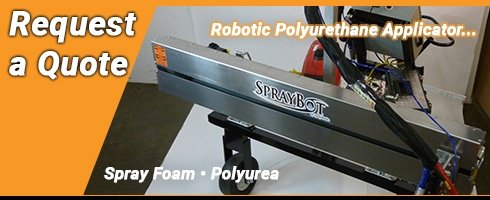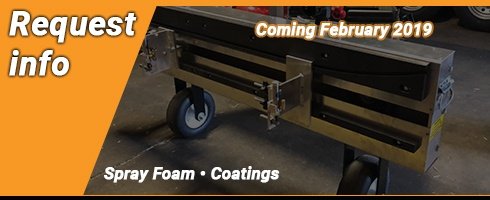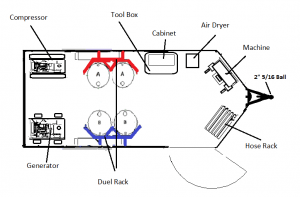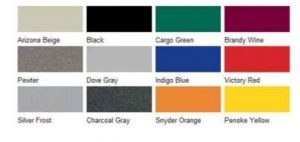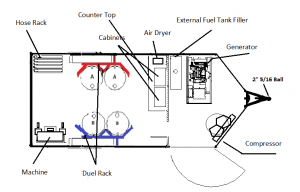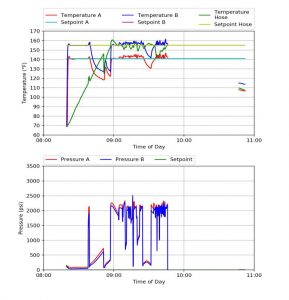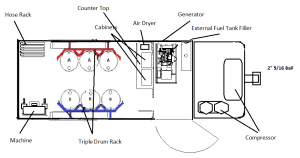Sometimes, there are things you just learn over time. Our team of experts have shared some of the trade secrets they have learned through successes and failures.
Jim Davidson
Jim Davidson is the Managing Partner at SprayWorks Equipment Group. He has 50 years of experience in the spray foam industry and has worked alongside many of the industry pioneers. Jim has designed and created industry equipment such as; Spraybot, Barrel Blazer, Roboliner and Polybot - among others.
John Davidson
John Davidson is the VP of Operations at SprayWorks Equipment Group and is an SPFA PCP Certified Roofing and Insulation Installer, Roofing and Insulation Project Manager, and Supplier Rep. With over 30 years of experience in the spray foam and polyurea industry, John brings a wealth of knowledge and hands-on experience. He has worked on commercial and residential buildings, bridges and infrastructure.
Dave Penta
Dave Penta is the VP of Sales at SprayWorks Equipment Group. For the past 30+ years, Dave has worked with multiple industries including; commercial and residential buildings, along with spray foam and coatings systems.
SPRAY GUNS
Use the Correct Mixing Chamber & PCT Combo
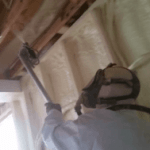
Apply spray better with this trick
Spray mechanics generally prefer a product that maintains a good level of sprayability for processing. Applying or processing spray foams just on the cooler side of the temperature processing spectrum can aid in maintaining a good pattern.
Continue reading→
Clean your screen filter
Materials entering the proportioning unit may require screening or filtering. Therefore, manufactures of the spray equipment commonly install y-strainers or filter housings on or near the machine to pre-screen the materials as they are transferred from the storage vessel prior to entering the proportioning unit. Proper cleaning or replacement of the screen filter must be completed daily or as needed to ensure proper material supply is achieved. Clogging and restriction of the screen filter may cause cavitation and/or poorly dispersed product known as off-ratio.
Continue reading→
HOSES
Cleaning your Rig to Save Money
How often do you give your rig a good thorough cleaning? You should do a thorough cleaning and inspection a few times a year. Taking the time to clean your rig from top to bottom will help you see any regular wear and tear from use and be able to address those areas before they become a costly problem. Be sure to address any rust areas or leaky zones to help keep your rig spraying for a long time to come.
Continue reading→Keeping Material Warm
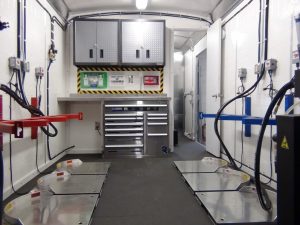
The Importance of Maintaining Daily Logs
Daily job logs are vital to the operation of your foam company because they are a true gauge of productivity, profitability and your break-even point. Job logs assist your staff in cultivating positive documentation habits of their day to day job activity.
This in turn helps you and your crew maintain expensive equipment, track costly material and supplies, assure customer satisfaction, give the true story of actual time and material versus planned time and material, lets you know which builders are properly accommodating your staff and tracks all vital manufacturer required information.
All this information is easily tracked in a document that takes less than 10 minutes to fill out per day. If you’ve ever been involved in a nasty job-site litigation you know this is 10 minutes a day very well spent.
Robert Quesnette is the Territory Sales Manager for the Northeast region at Rhino Linings. Robert has more than 25 years experience in the insulation industry. He founded and operated one of the first foam companies in Connecticut and has experience with client training, building science and code seminars.
TRANSFER PUMPS
When to Perform Maintenance Checks
Avoid unnecessary down time by performing maintenance checks before you start your day. It is easier to perform these checks while the system is cool and pressure free. Taking this step saves you downtime later if something was wrong.
How to Fix your Transfer Pump – Before you Replace it
PMC GHO, IPM OP series, Graco T2 Transfer Air motor performance
After use, the transfer pump air motor starts operating sluggish and leaks air. This is generally due to deforming (wear) of the upper reversing spring and the upper air valve gasket. You can notice the spring wear off in two ways. The first being the pump fails to return to the down stroke and secondly the pump will pause momentarily when reversing to the down stroke which appears as a cavitation type action. In this situation, hanging the spring is the best solution, but when in a pinch, stretching the spring to its near original length can get you through the day.
SCREENS & FILTERS
Nothing Found
It seems we can’t find what you’re looking for. Perhaps searching can help.
WEATHER
Prepare for Cold Weather
With the cold weather quickly approaching and roughly 20 good working days between now and Thanksgiving, it’s important to make the most of product yield and production by being prepared. Make sure drums are warm and ready for the job by keeping them heated with products such as the Barrel Blazer heating system. Temps are dropping in evening, so container temps are going to drop. Plan ahead and be effective!
PROCESS & DOCUMENTATION
Making a Record of Your Parts
Proper part identification is extremely important to ensure you are receiving the correct part for your machine. If a part is ordered by the wrong number, the wrong part is shipped and extra shipping charges are incurred for returns. But more important than the extra shipping involved, is the possible loss of production time that this unnecessary delay may cause you.
I recommend making a record of all part numbers, as equipment is purchased. This will help prevent delays and added expense.

